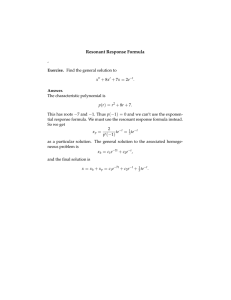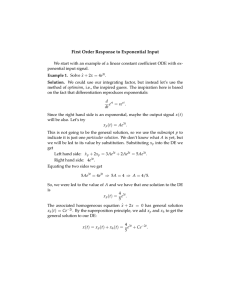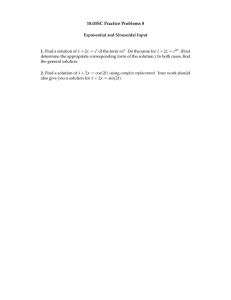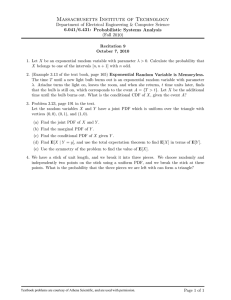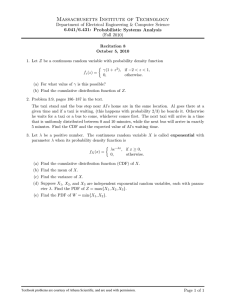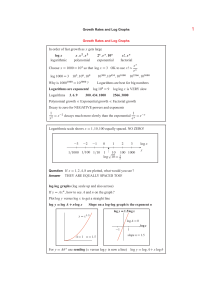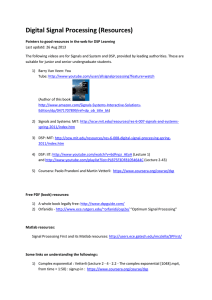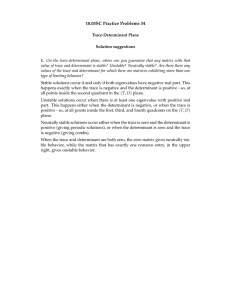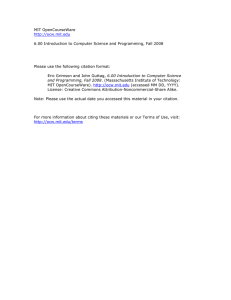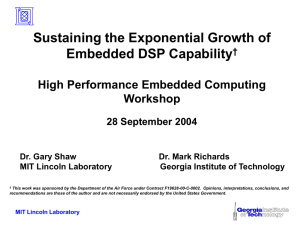Document 13562050
advertisement
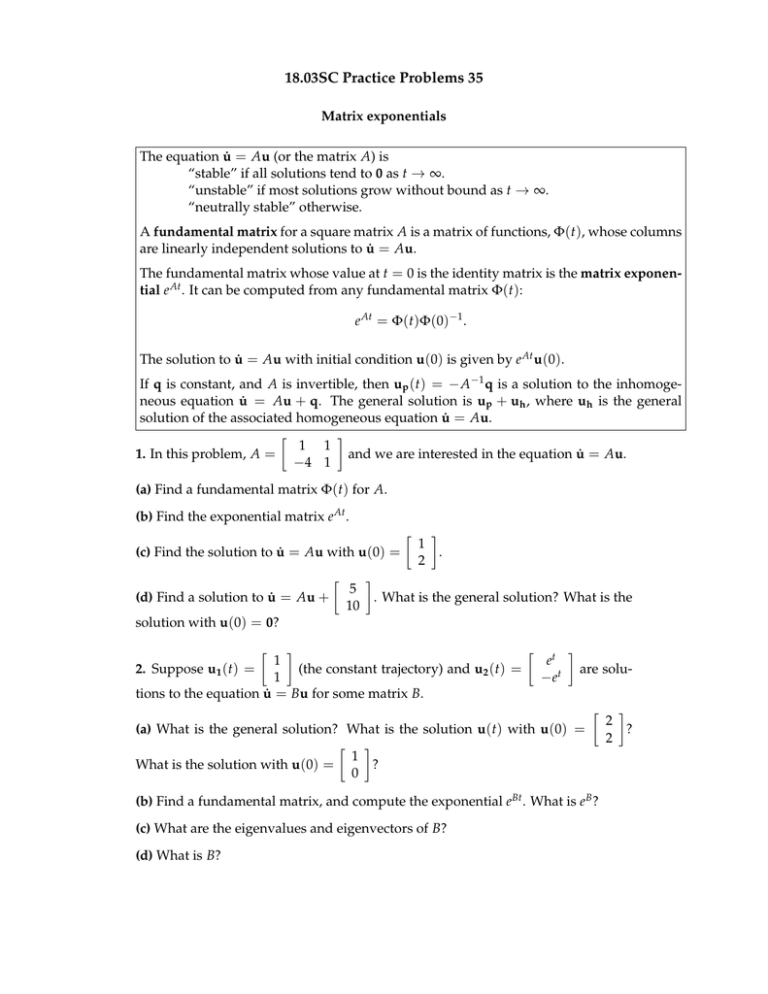
18.03SC Practice Problems 35 Matrix exponentials The equation u̇ = Au (or the matrix A) is “stable” if all solutions tend to 0 as t → ∞. “unstable” if most solutions grow without bound as t → ∞. “neutrally stable” otherwise. A fundamental matrix for a square matrix A is a matrix of functions, Φ(t), whose columns are linearly independent solutions to u̇ = Au. The fundamental matrix whose value at t = 0 is the identity matrix is the matrix exponen­ tial e At . It can be computed from any fundamental matrix Φ(t): e At = Φ(t)Φ(0)−1 . The solution to u̇ = Au with initial condition u(0) is given by e At u(0). If q is constant, and A is invertible, then up (t) = − A−1 q is a solution to the inhomoge­ neous equation u̇ = Au + q. The general solution is up + uh , where uh is the general solution of the associated homogeneous equation u̇ = Au. � � 1 1 1. In this problem, A = and we are interested in the equation u̇ = Au. −4 1 (a) Find a fundamental matrix Φ(t) for A. (b) Find the exponential matrix e At . � (c) Find the solution to u̇ = Au with u(0) = � (d) Find a solution to u̇ = Au + 5 10 1 2 � . � . What is the general solution? What is the solution with u(0) = 0? � � t � 1 e 2. Suppose u1 (t) = (the constant trajectory) and u2 (t) = are solu­ 1 −et tions to the equation u̇ = Bu for some matrix B. � � 2 (a) What is the general solution? What is the solution u(t) with u(0) = ? 2 � � 1 What is the solution with u(0) = ? 0 � (b) Find a fundamental matrix, and compute the exponential e Bt . What is e B ? (c) What are the eigenvalues and eigenvectors of B? (d) What is B? MIT OpenCourseWare http://ocw.mit.edu 18.03SC Differential Equations�� Fall 2011 �� For information about citing these materials or our Terms of Use, visit: http://ocw.mit.edu/terms.
